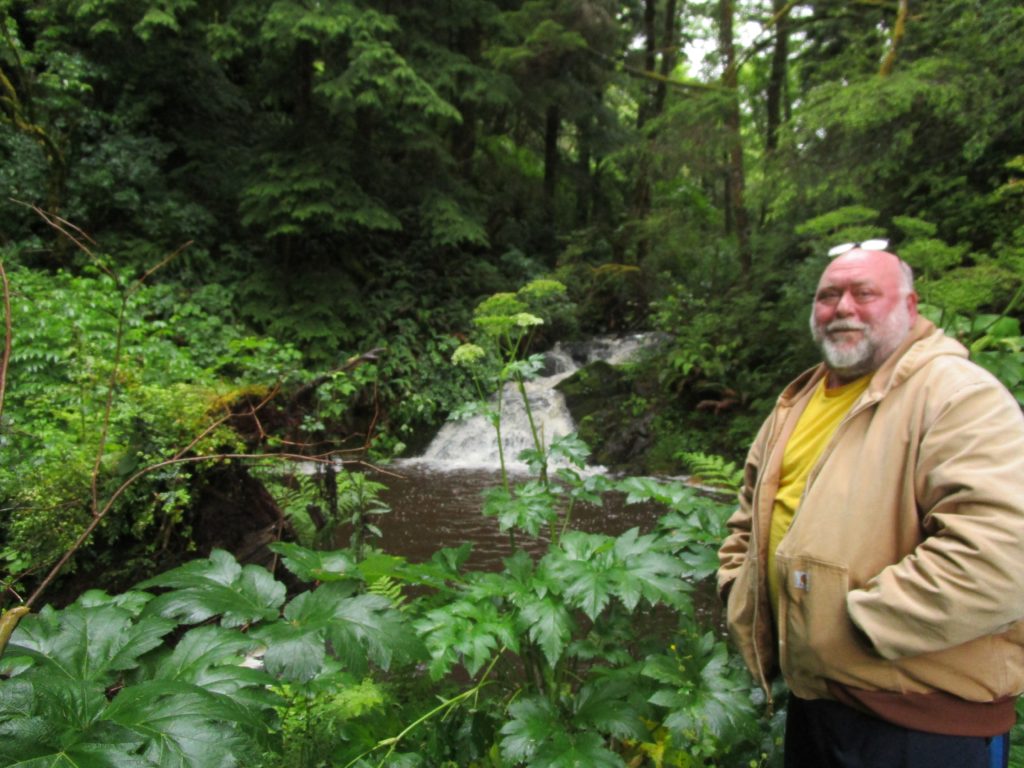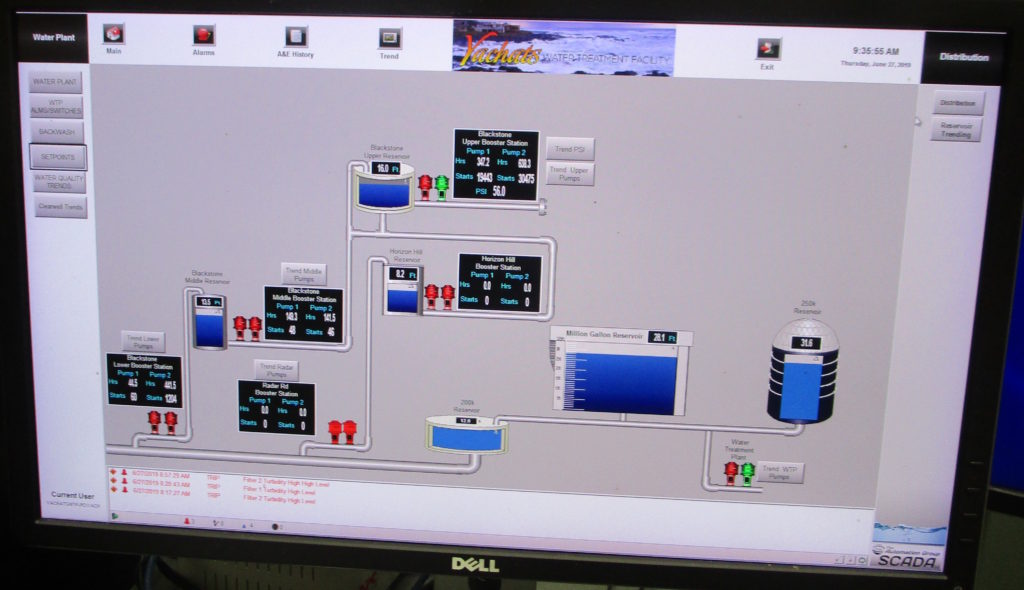
By QUINTON SMITH/YachatsNews.com
Yachats experienced its third driest June in the last 10 years and so far this year has received five inches less than its average six-month rainfall.
But the city’s water sources are in good shape, according to Rick McClung, who oversees Yachats’ water system, and it won’t be until August until any supply issues might appear.
Yachats received 1.38 inches of rain in June, the majority falling on June 26 when .83 inches was recorded at the city’s wastewater treatment plant. June’s rainfall was just half of the monthly average of 2.76 inches.
For the first six months of 2019, Yachats received 33.91 inches of rain. For the past 10 years the average for the first six months of the year is 38.9 inches. The 10-year average is 77.68.
July and August are the driest months of the year in Yachats, according to city rainfall records, coinciding with the greatest demand on water from tourists and owners of vacation homes.
Yachats’ water system has the capacity to produce 450,000 gallons of water a day. It has six storage tanks with a capacity of 1.7 million gallons.
During most June months, McClung said, Yachats’ 850 residential and commercial customers use an average of 170,000 gallons of water a day. That peaks at 250,000 gallons a day over the July 4th holiday but remains high through August.
“Without more rain this summer we are trending for another drought,” McClung said. “But it’s amazing how a little rain in the summer can change things.”
That happened with the one-day deluge last week.
Yachats gets its water from Salmon and Reedy creeks. How much water McClung makes each day and whether the city institutes restrictions on use is based on the flow of those two creeks and in the Yachats River.
The city can institute a basic – or Level 1 – restriction on water use if the combined flow of the two creeks is less than 275 gallons per minute. If the city is using water from the Yachats, which it currently is not, then the flow in it also has to be below 35 cubic feet per second.
Flow in the two creeks this week is about 400 gallons per minute, McClung said. Unless there is a summer rainstorm, flow in the two creeks will slowly decrease through the end of August.
“Hot weather really shrinks the creeks,” McClung said.

With creek flows at 400 gallons a minute, he said, the treatment plant can run at full capacity. But at 200 gallons a minute, for example, that means the city produces only 288,000 gallons in a day – and reaches a danger threshold.
The City Council issued a Level 1 water restriction last August, which mostly meant that people can only water their landscaping every other day.
Ironically, McClung said, consumption under Level 1 restrictions increase because people water their landscaping more intensely every other day.
“They think it’s urgent that they water, and we end up using more,” he said.
McClung says the Level 1 restriction is more of a warning that without a rainstorm the Level 2 restriction could be following soon.
The city instituted a Level 2 restriction in 2015 when flow in Salmon and Reedy creeks dropped below 200 cubic feet per second. That stopped all outside water use and even restricted water service in restaurants.
That restriction came during a prolonged statewide heat wave that sent more people to the Oregon coast seeking relief – and put more pressure on supplies.
In August, McClung said, water in the city’s storage reservoirs can dip to half – about 800,000 gallons – of capacity. That’s when he runs the treatment plant daily, but more slowly because the creeks are so low.
“We generally have plenty of finished water storage,” he said. “What we need is storage for raw water” that can be run through the plant when streams hit their lows.


